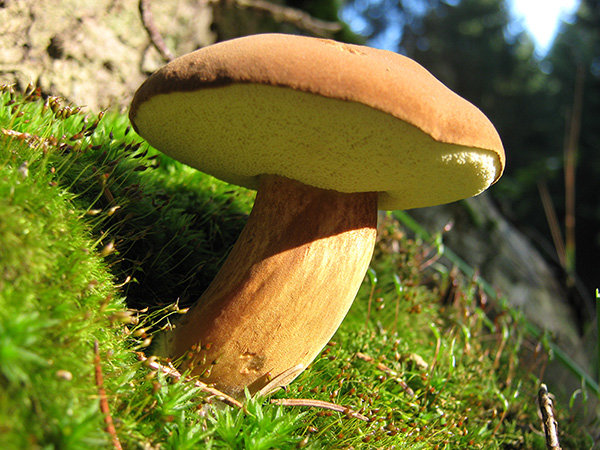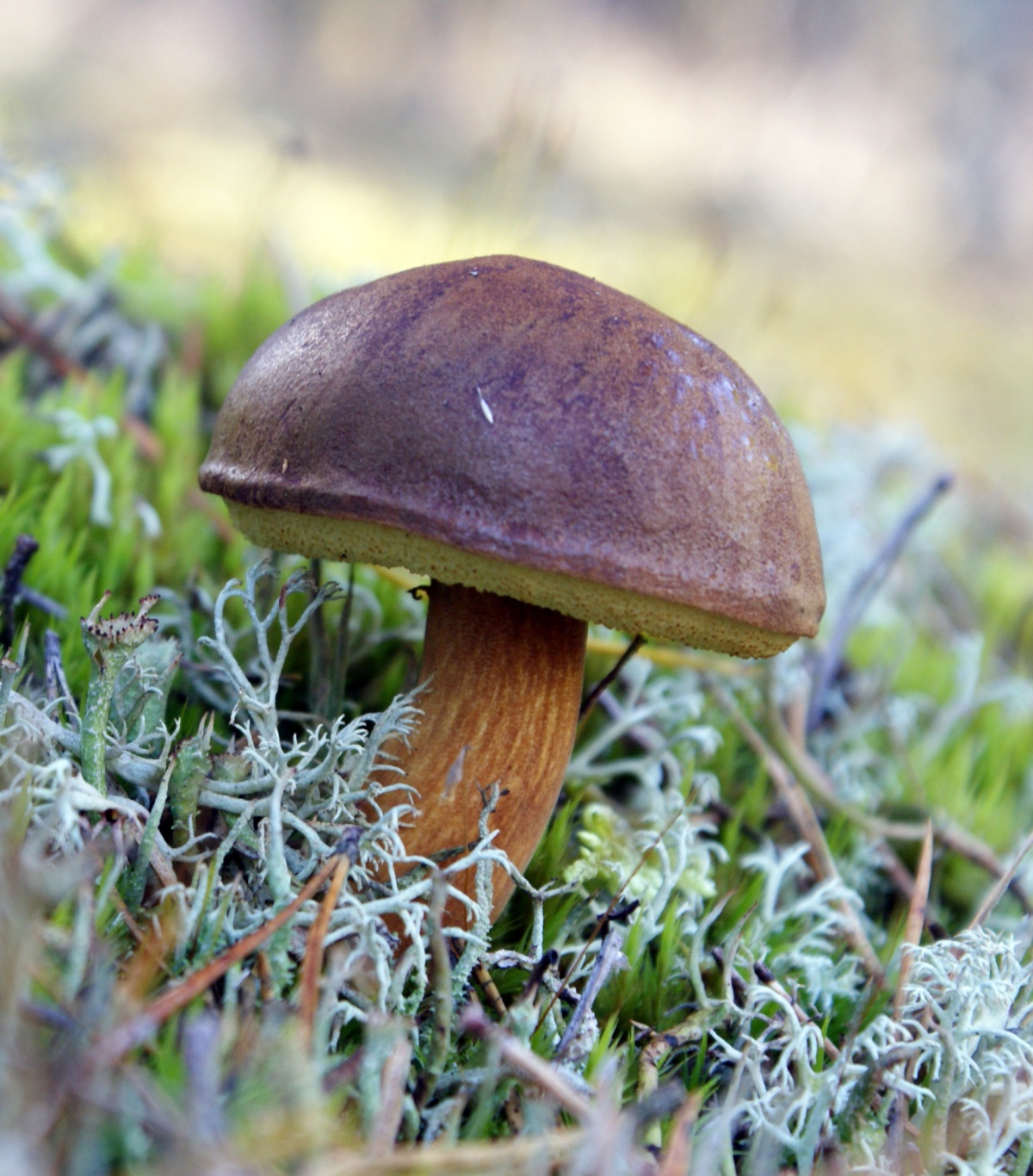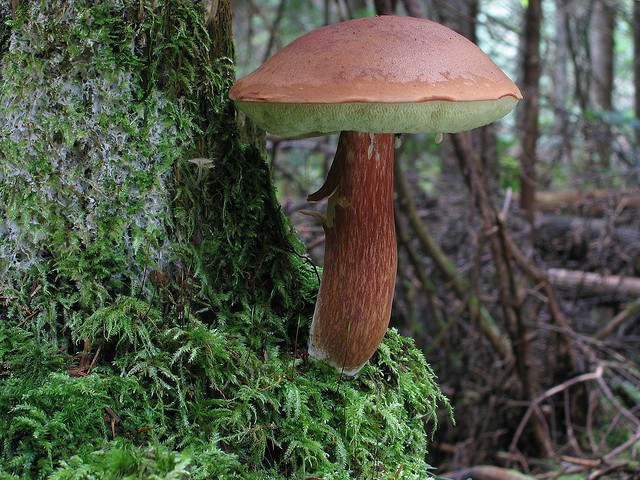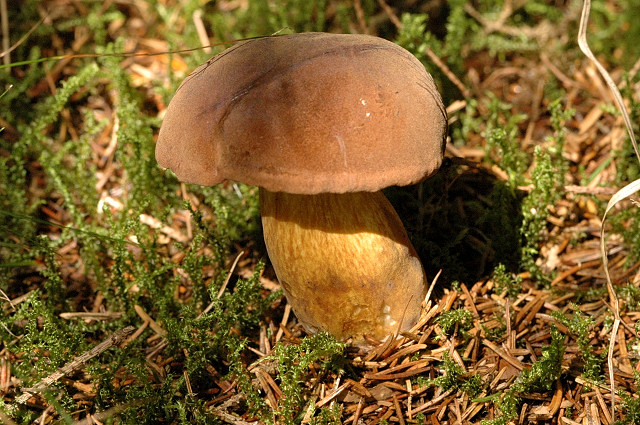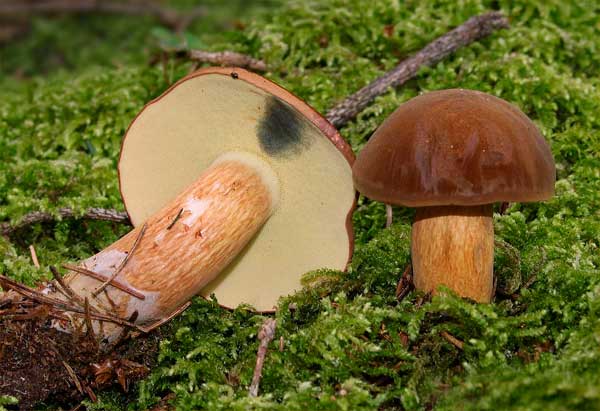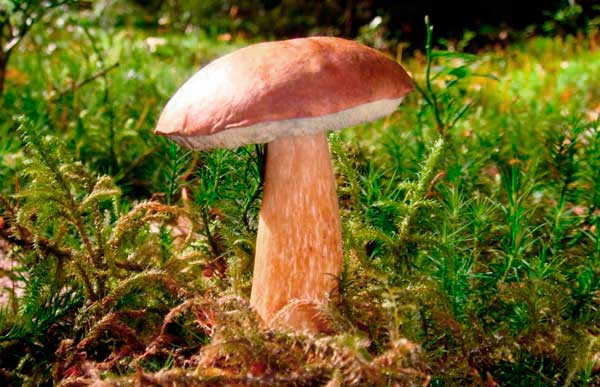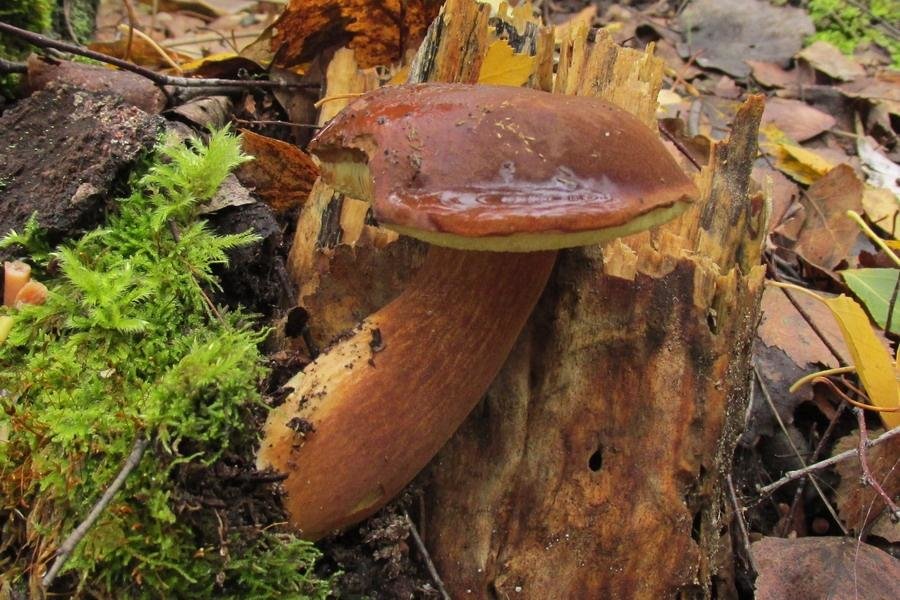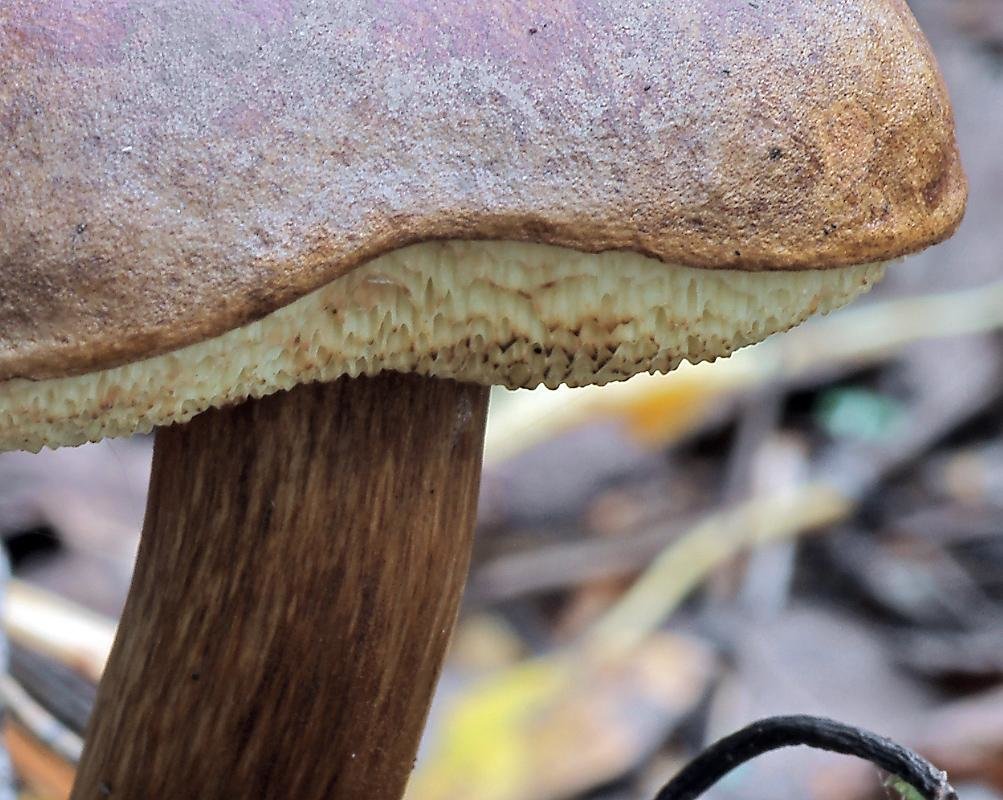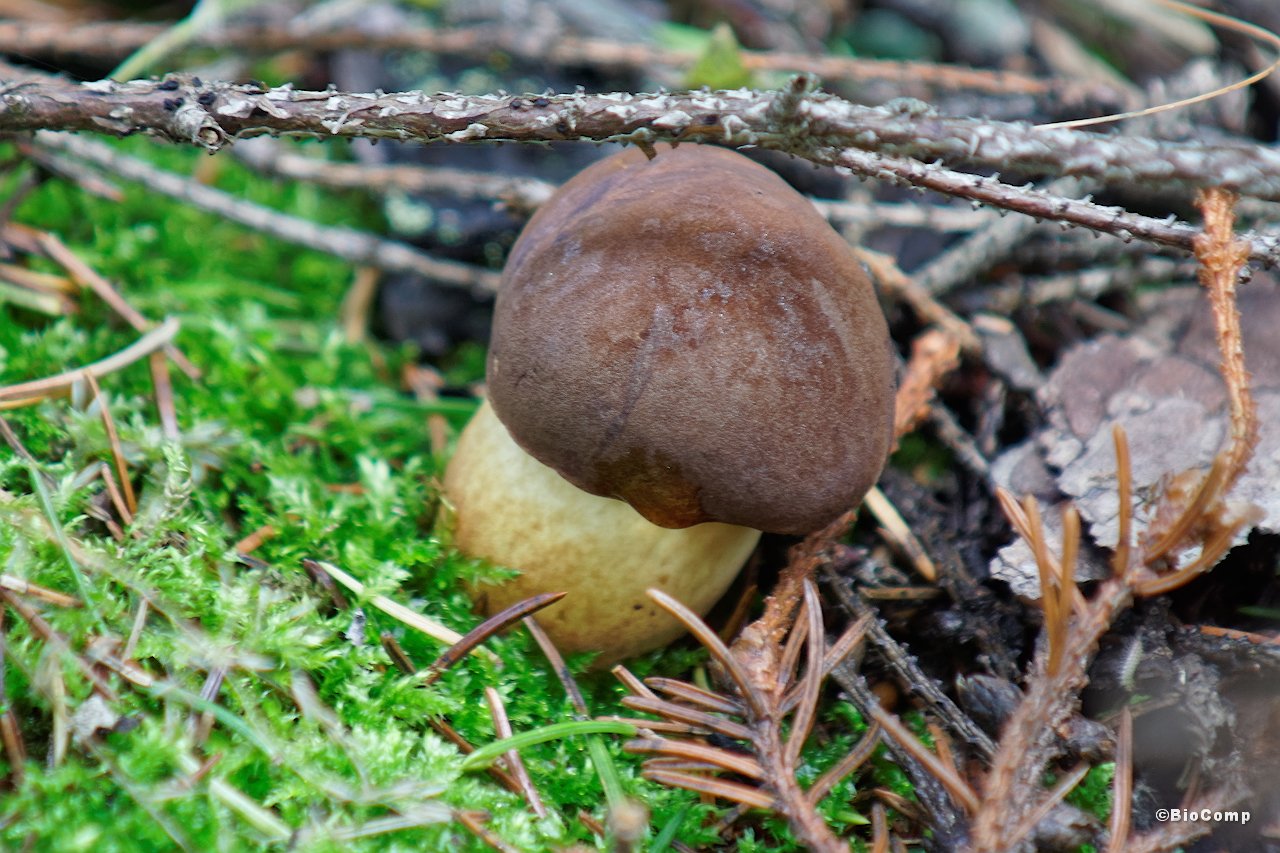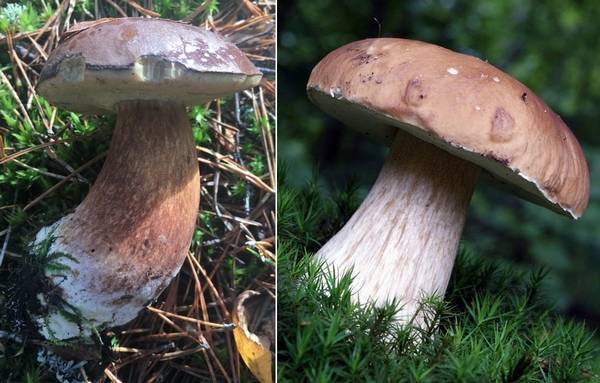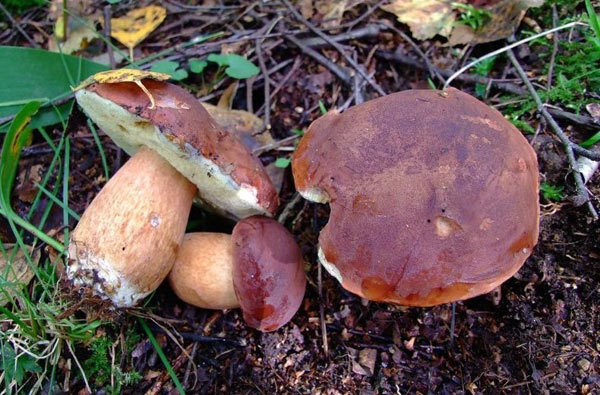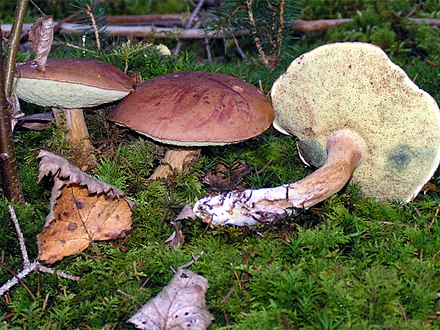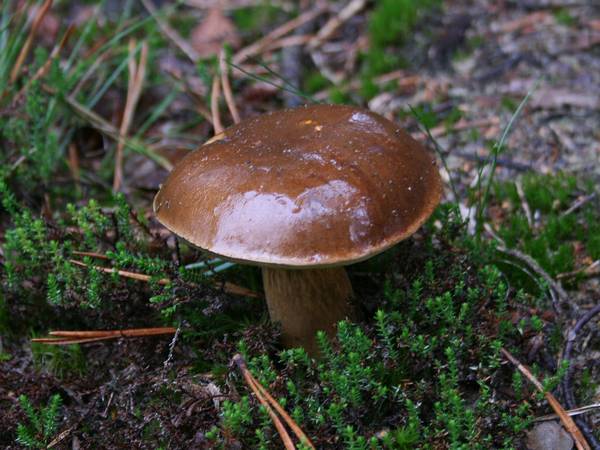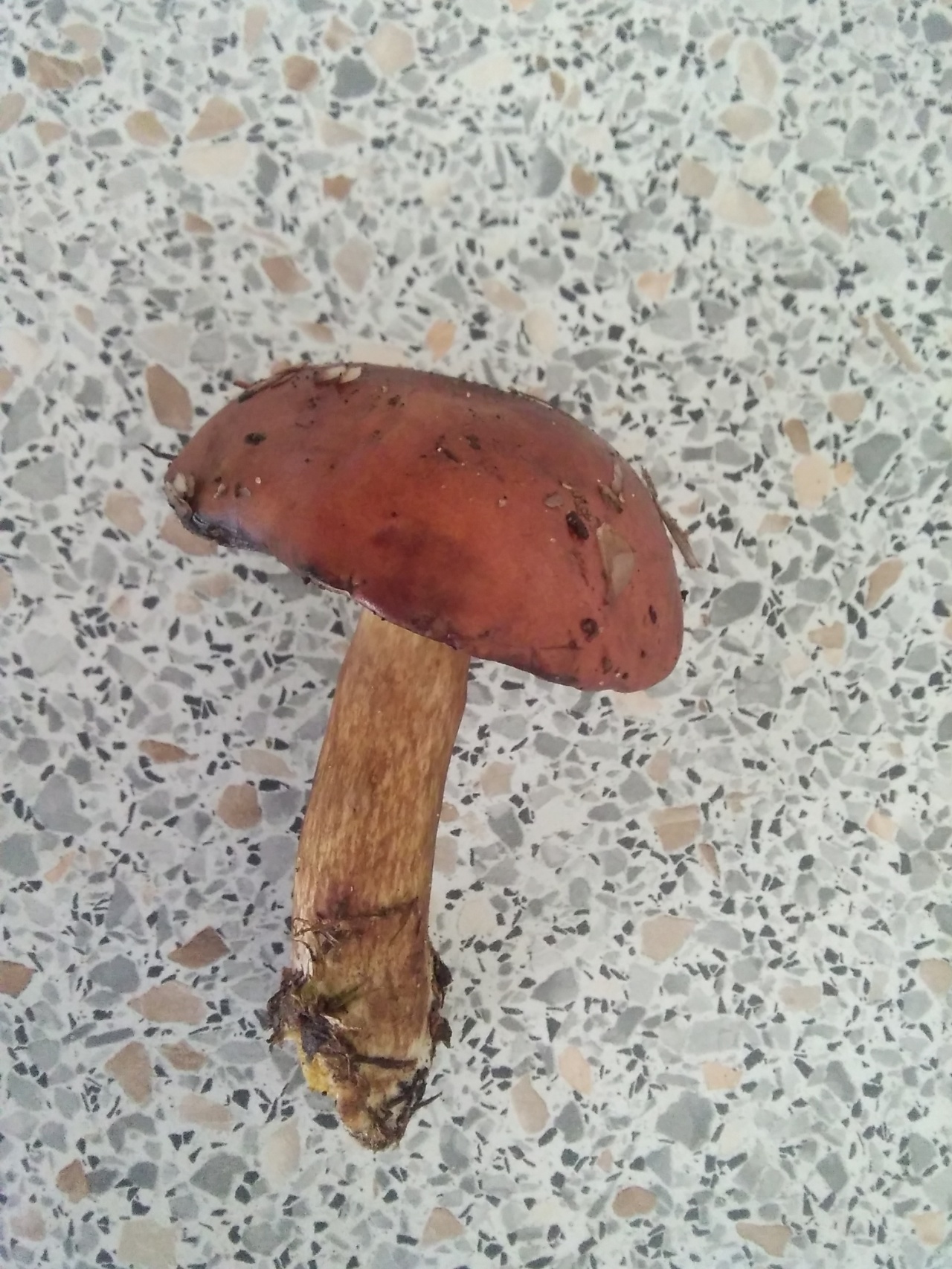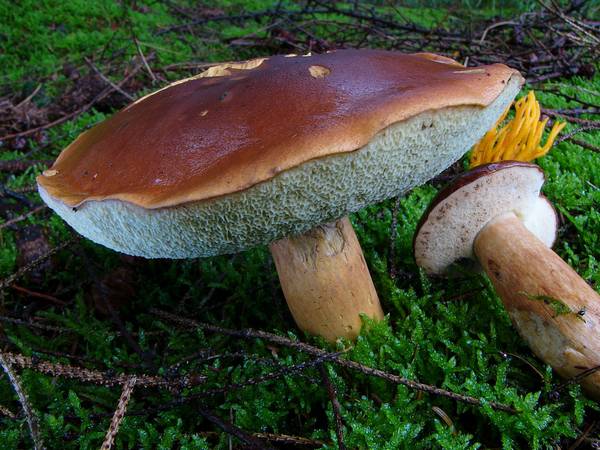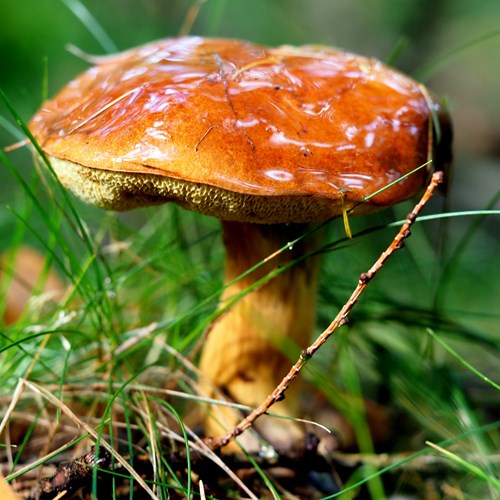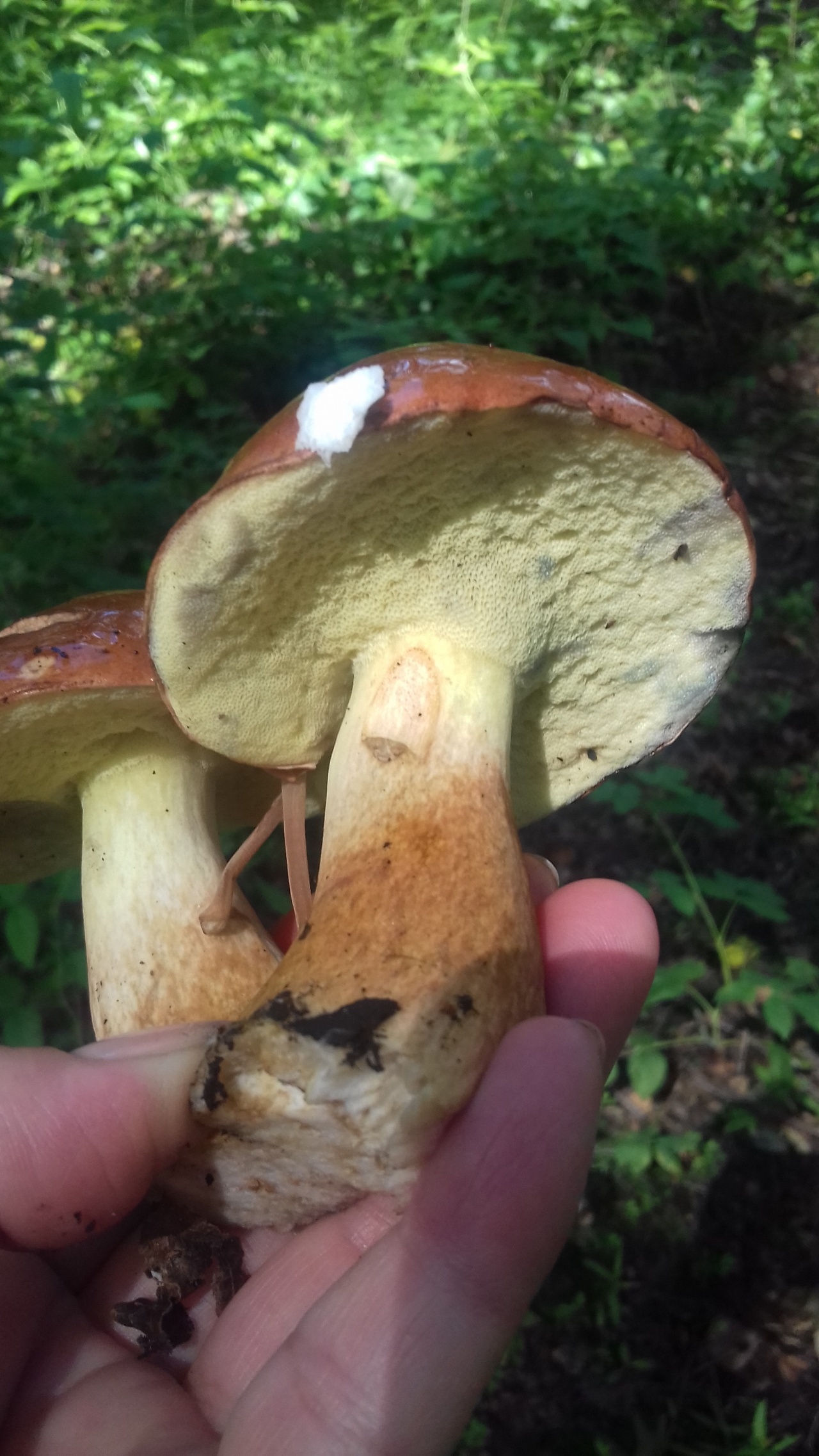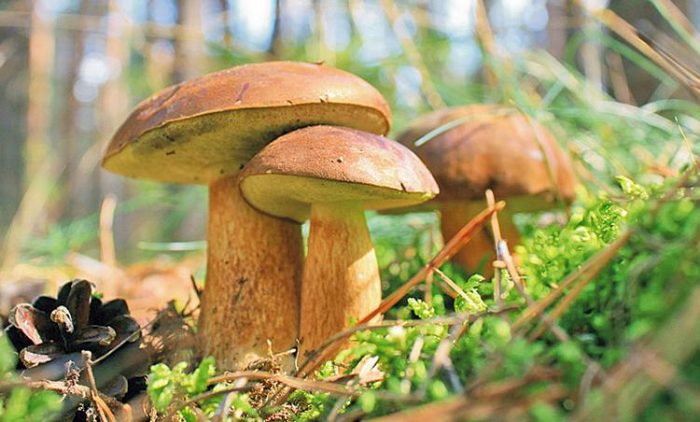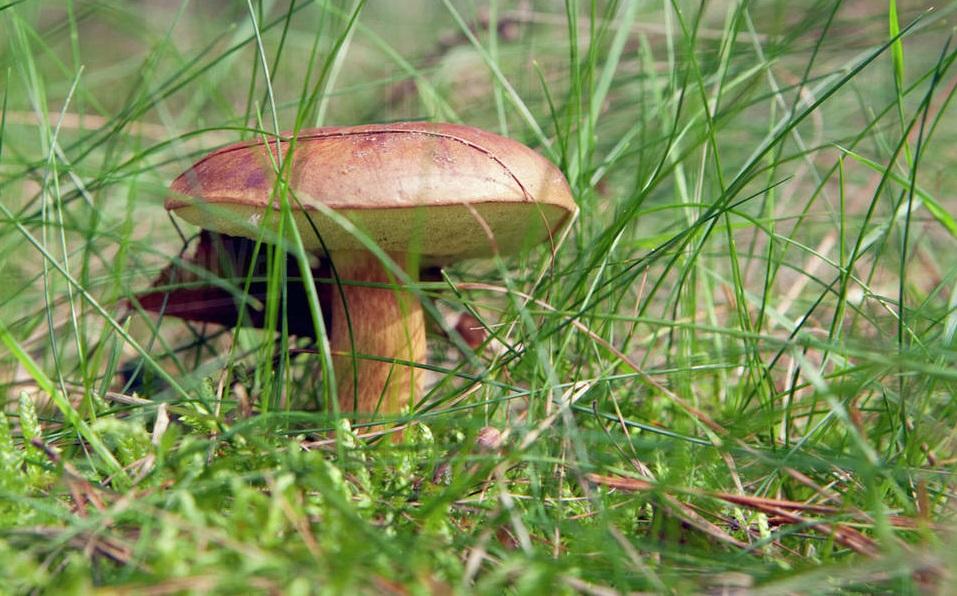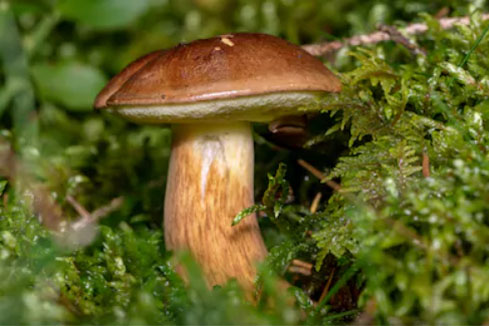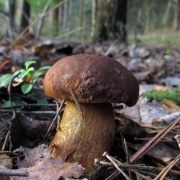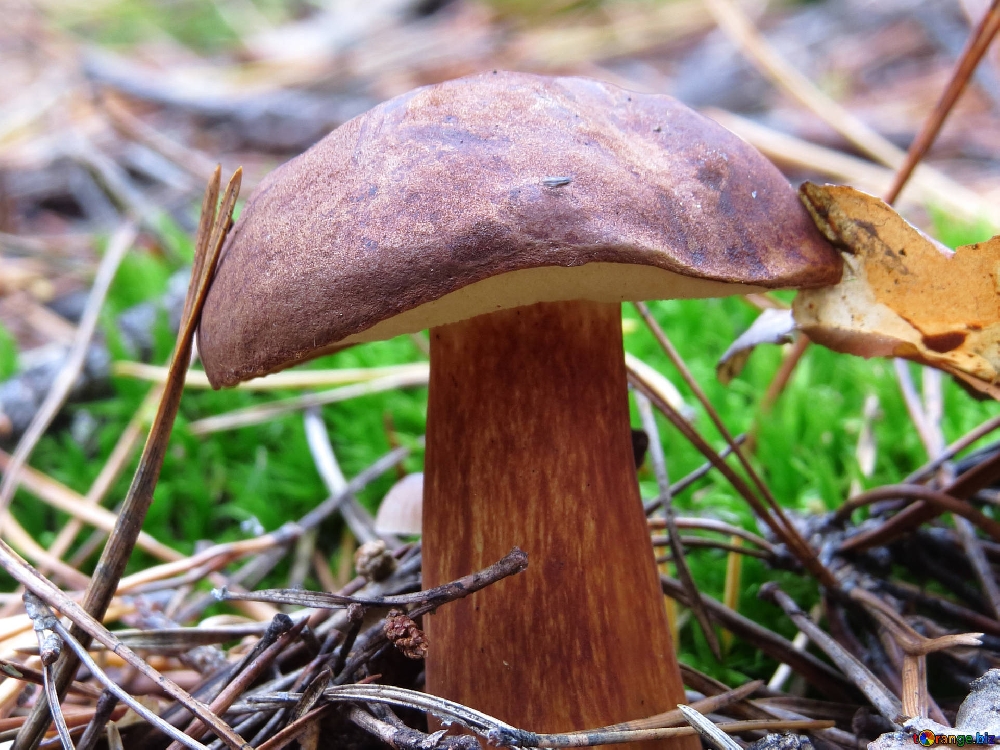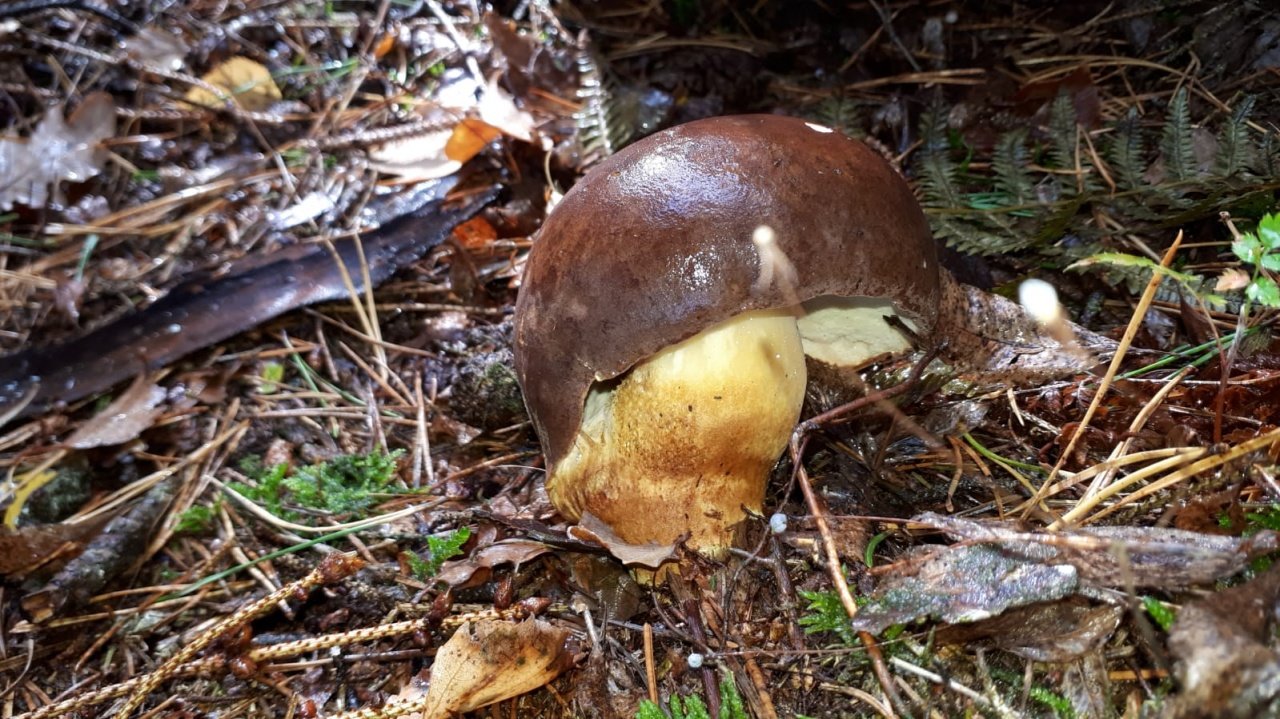Polish mushroom (lat.Imleria badia)
Name Polish mushroom.Latin name: Imleria badia.Other names: Chestnut flywheel, Brown mushroom, Pan's mushroom.Department: Basidiomycota.Class: Agaricomycetes.Order: Boletovye.Family: Boletovye.Genus: Imleria.Edible mushroom.
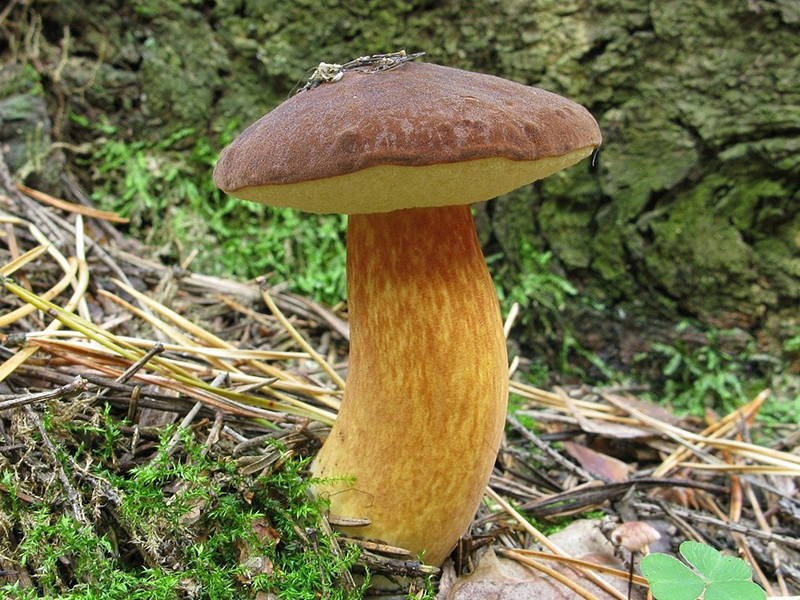 Name Polish mushroom.Latin name: Imleria badia.Other names: Chestnut flywheel, Brown mushroom, Pan's mushroom.Department: Basidiomycota.Class: Agaricomycetes.Order: Boletovye.Family: Boletovye.Genus: Imleria.Edible mushroom.
Name Polish mushroom.Latin name: Imleria badia.Other names: Chestnut flywheel, Brown mushroom, Pan's mushroom.Department: Basidiomycota.Class: Agaricomycetes.Order: Boletovye.Family: Boletovye.Genus: Imleria.Edible mushroom.
Scientific synonyms
Boletus castaneus ß badius
Boletus badius
Boletus castaneus var. badius
Rostkovites badia
Viscipellis badia
Ixocomus badius
Suillus badius
Xerocomus badius
Leg
45–125 mm in height, 10–40 mm in thickness, cylindrical, as a rule, thickened closer to the base, not hollow, light brown, brown or light yellow with red-brown longitudinal fibers, sometimes turns blue when pressed.
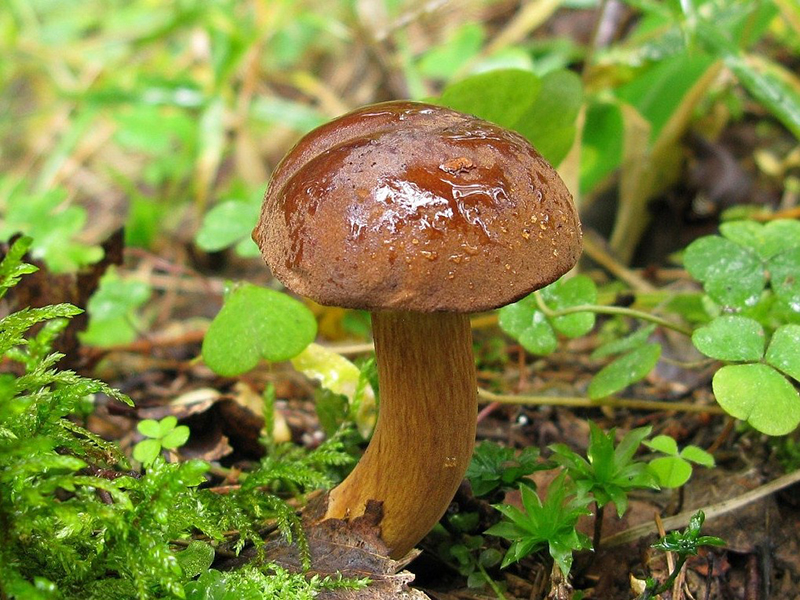
Hat
45-155 mm in diameter, dark brown, brown-chestnut, in young fruiting bodies semicircular, slightly velvety. As it grows, the cap becomes convex and then cushion-shaped, naked, dry, slightly sticky at high ambient humidity. The peel is relatively easy to separate from the pulp.
Hymenophore
Tubular, adherent to the peduncle or notched. The tubules are 10–20 mm long, creamy; as they grow, they become light yellow, olive yellow, greenish, and turn blue on cut. The pores are whitish, light yellow, small, then greenish-yellow, olive-green, noticeably enlarged in diameter, turn blue when pressed.
Pulp
Dense and firm, creamy or light yellow in color, turns blue on the cut, without a pronounced taste with a pleasant mushroom smell.

Habitat
Grows on the ground singly or in groups in coniferous and deciduous forests. Quite common in regions with relatively mild climatic conditions.
Similarity
Due to its morphological characteristics, the Polish mushroom is very difficult to confuse with other species.
|
December |
January |
February |
|
March |
April |
May |
|
June |
July |
August |
|
September |
October |
November |
The nutritional value
The mushroom is not inferior in its nutritional characteristics to the white mushroom, it is used in a variety of dishes and for preparations for future use.
Distribution and collection
The Polish mushroom is almost ubiquitous throughout Central and Western Europe, it captures part of Central Asia, the Caucasian foothills, the Urals, the Urals and Eastern Siberia into its range. In Central Russia, a few decades ago, it was quite rare, but quickly spread and is now found relatively often.
The picking time for the Polish mushroom is during the entire "quiet hunting" season, from June to the first frost in November.
It is worth looking for it in mixed and coniferous forests not far from large, old trees (but not near the trunk itself), in small lighted meadows. If the forest is coniferous, it is worth looking in the oldest part of it, where moss grows most abundantly. The Polish mushroom also loves the slopes of ravines, if they are not flooded.
It almost never occurs singly, it grows in small “families”. But there is almost no chance to meet a "bruise" in a purely deciduous forest.
Botanical description
An adult white Polish mushroom has a pillow-like or flat-shaped cap with a diameter of up to 12-14 cm. In young specimens, the cap has a predominantly semicircular and convex shape. The surface of the cap is covered with a smooth, dry, non-peeling skin that can be sticky to the touch in the wet season. The color of the cap is most often chestnut brown or brownish brown.

The fruit body of young mushrooms looks attractive, is characterized by a slight bluish discoloration. The pulp has a very pleasant mushroom aroma and mild taste. The tubular layer is characterized by a free arrangement and the presence of a slight recess. The tubular layer is yellowish or greenish-yellow, with angular pores; when pressed, a blue discoloration is formed.
The average leg length does not exceed 8-10 cm.The leg can be either cylindrical or slightly narrowed or swollen in the lower part. There is a pronounced fibrousness and a light brown color with a yellow tint. Spores are ellipsoid-fusiform, with a smooth surface, brownish-olive color. It is recommended to collect young mushrooms with an incompletely opened cap.
general information
The Polish mushroom is called this way because earlier it was imported to European countries mainly from the "panskoy" Poland, where the entire elite (called pans) loved to eat it and considered it a noble food. That is why this mushroom is also called pansky.
The Polish mushroom is edible, belongs to the second category, is quite popular among mushroom pickers, and is also in great demand for its pleasant taste and many ways of cooking.
- Advertising -
The Polish mushroom (it is also known as the brown mushroom and the chestnut moss) belongs to the Boletaceae family, the genus Boletus, and is also included in the boletus genus.
Features of use
The Polish mushroom has found wide application in the preparation of many mushroom dishes, and is also suitable for freezing for the winter, drying and pickling. Excellent taste and pronounced mushroom aroma gives Polish mushroom soups, hearty mushroom gravies, fillings for pies or pancakes. You can also make the very popular mushroom roast.
After cleaning and primary processing in the form of boiling, you can proceed to the main stage of cooking: boiled Polish mushrooms must be cooled and chopped finely enough, after which they are fried in a hot pan. It is best to fry mushrooms in vegetable oil or in sour cream with salt and pepper. The average frying time does not exceed 8-10 minutes.
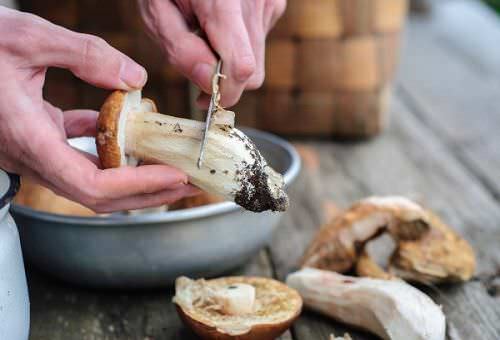
Especially popular is lasagna with Polish mushrooms:
- To prepare this mushroom dish, pour a mixture of sour milk, sunflower oil and salt into the dishes.
- Then flour is added so that the finished dough has the consistency of thick sour cream. Well-fried mushrooms with onions are added to the container.
- The dough with mushrooms is poured into a pan and fried, the finished cakes are stacked on top of each other.
- The last layer is sprinkled with grated cheese, after which the lasagna is cooked in the microwave for 5-6 minutes.
Interesting about the Polish mushroom
This mushroom has become the subject of detailed research by Polish scientists. And it turned out that it is not only tasty, but also very healthy.
It contains theanine in large quantities, which:
- Helps in the prevention of cancer
- Helpful in relieving stress
- Neutralizes the effect of caffeine and normalizes blood pressure
- Helps to lose weight.
One of the versions why this mushroom is named Polish says that during the Polish rule in Belarus and Ukraine, local residents ignored such mushrooms, while the Poles, on the contrary, preferred them. The locals noticed this and gave the mushroom an appropriate name.
Another theory is related to the fact that at one time Poland was massively harvesting such mushrooms and selling them for export.
Good luck to you "quiet hunt!"
Biological description
Fruiting bodies are cap-leg, with a tubular hymenophore. The cap of young mushrooms is hemispherical, then becomes convex and flattened, painted in chestnut brown or dark brick brown tones. The surface is sticky, shiny in wet weather, and when it dries, it is velvety or with small flakes.
The pores and tubules of the hymenophore are at first creamy or light lemon-yellow, turn dark yellow with age, turn blue when touched. The pores are angular.
The stem is central, of the same color as the cap or lighter, covered with numerous very small yellow-brown or violet-brown scales.
The pulp is white or yellow, above the tubes and in the upper part of the leg, in the air, turns blue to one degree or another; the smell is not pronounced, the taste is insipid.
Spores are elliptical to oblong, with smooth, slightly thickened walls. Pleurocystids and cheilocystids are present, thin-walled, lanceolate to fusiform with a pointed end. The cuticle of the cap is ixotrihodermis, its hyphae are yellow, intertwined, encrusted with yellow-brown pigment, immersed in a mucous mass. There are no buckles on the hyphae.
The pigments responsible for the chestnut brown coloration of the Polish fungus, badion A and norbadion A, have not been found in members of any other genus of the family. Boletaceae... They were isolated from the gleba of Gasteromycete boletes of the pisolithus dye and pseudo-raincoat.
Evaluation of taste, medicinal properties, benefits and possible harm
Although this species belongs to the edible mushrooms of the second category, many put it on a par with boletus in taste. It is widely used in cooking, it is boiled, fried, baked, harvested for the winter - pickled, salted, dried, frozen. It is used to prepare first courses, soups, pie and pancake fillings, snacks, side dishes, sauces.
Traditional medicine has long used the chestnut flywheel for medicinal purposes. Its healing effect Imleria badia is also confirmed by official science. As a result of his reception:

- the body is cleansed of toxins;
- the function of the nervous system is stabilized, the susceptibility to stress decreases;
- the risk of developing atherosclerosis decreases;
- hair grows better, nails heal;
- healing of abrasions, bruises is accelerated, hematomas, wen and warts resolve, puffiness is removed;
- it has a diuretic effect.
Systematic use of Polish mushroom:
- removes sand from the kidneys;
- normalizes blood pressure;
- thanks to amino acids, it improves brain function;
- is the prevention of malignant diseases.
Oleshka's low calorie content - 19 kcal - makes it popular in a variety of weight loss diets and vegetarian options. He contains:
- proteins - 1.7 g;
- fat - 0.7 g;
- carbohydrates - 1.5 g
However, when collecting it, it is worth considering the fact that bruises are capable of accumulating heavy metals and radionuclides from the soil and air, in particular cesium. Therefore, you should be careful and look for them in ecologically clean places, away from production facilities, cities, and busy roads.
Growing at home and in the country
Avid amateurs today began to grow various types of mushrooms at home, gradually turning a hobby into a profitable business. The Polish did not escape this fate either. With proper care, they can reward their owners with a good harvest, and more than once a year.
Earth
An area of 2-3 square meters in the shade is suitable for this purpose.
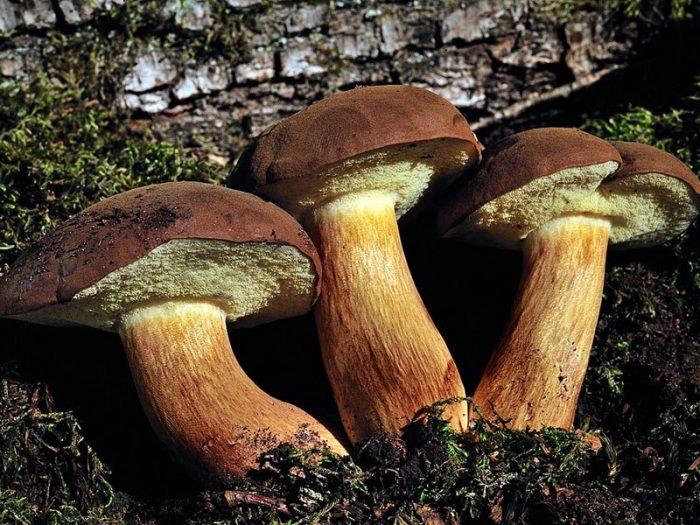
- You need to dig a ditch up to 30 cm deep.
- Pour wood dust, bark, fallen leaves on the bottom in a layer 10 cm thick. Put earth from under the trees or rotted manure on top.
- Spread the mushroom mycelium evenly over the entire surface of the ditch.
- Cover again with plant debris with a layer of 3 cm.
- At the end, pour 5 cm of high-quality soil taken from the garden.
Watering and temperature conditions
Immediately after sowing, as well as in the future as necessary, the plantation must be watered, keeping it constantly moist. This is especially true on hot and dry days. The optimum temperature for cultivation should be between 12 and 26 ° C.
Since there is no growing season for mushrooms, they can be grown all year round. But for this, it should be transplanted from open ground into boxes or boxes.
Timing of fruiting
With the right technique and careful care, the first specimens will appear in 1.5–2 months. New shoots will delight amateur agronomists in one and a half to two weeks.
Time and place of collection in Russia
This charming forest fruit grows mainly in coniferous forests, sometimes found in deciduous groves, more often on sandy ground.It settles at the base of trees, on stumps. Gravitates towards "individualism", sometimes grows in small groups. Forms mycorrhiza with pine, spruce, European chestnut, oak, beech.
The range of this species includes the northern temperate zone, the European part of Russia, Siberia, the Far East, the North Caucasus, Belarus. It bears abundant fruit in Poland and the Ukrainian Transcarpathia, where it received the names - pansky and Polish.
The growing time in the Russian open spaces is from June to November. Resistant to cold snaps, sometimes found at a time when the rest of the tubular have already disappeared.

Bibliography
- Wasser S.P. Edible and poisonous mushrooms of the Carpathians. Uzhgorod: Karpaty, 1990.204 p.
- Garibova L.V., Lekomtseva S.N. Fundamentals of mycology. Morphology and taxonomy of fungi and mushroom-like organisms. M .: KMK Scientific Publishing Association. 2005.220 p.
- Garibova L.V. Mushrooms from A to Z. Illustrated reference book. M .: JSC Fito +. 2009.192 s.
- Red Data Book of the Russian Federation (Plants and Fungi) M .: Scientific Publishing Association KMK, 2008. 855 p.
- Smirov L.E., Krivosheev S.V., Hannibal F.B. Mushrooms of the Leningrad Region and St. Petersburg. St. Petersburg: Regional Publishing House, 2012.320 p.
- Semyonov Yu.G. A complete illustrated guide to the mushroom picker. Moscow: Publishing House of SMEs, 2001.576 p.
- Lesso T. Mushrooms: Keys. M: LLC "AST Publishing House": LLC "Astrel Publishing House", 2003. 304 p.
- Kibby J. Atlas of Fungi: Keys to Species. SPb .: Amphora. TID Amphorab 2009.269 p.
- Pelle Jansen. All about mushrooms. SPb .: SZKEO "Crystal". 2000.159 p.
- Mleczek, Mirosław, et al. Content of selected elements and low-molecular-weight organic acids in fruiting bodies of edible mushroom Boletus badius (Fr.) Fr. from unpolluted and polluted areas. // Environmental Science and Pollution Research 20 (2016): P. 20609-20618.
- Jaworska, Grażyna, et al. Composition and antioxidant properties of wild mushrooms Boletus edulis and Xerocomus badius prepared for consumption. // Journal of food science and technology12 (2015): P. 7944-7953.
- Ferreira, Isabel CFR, Lillian Barros, and Rui Abreu. Antioxidants in wild mushrooms. // Current Medicinal Chemistry12 (2009): P. 1543-1560.
- Kirk P. M., Cannon P. F., Minter D. W., Stalpers J. A. et al. Ainsworth & Bisby's Dictionary of the Fungi. CAB International, 2008 .-- 771p.
- Zmitrovich I.V., Kovalenko A.E. Lentinoid and Polyporoid Fungi, Two Generic Conglomerates Containing Important Medicinal Mushrooms in Molecular Perspective // International Journal of Medicinal Mushrooms. DOI: 1615 / IntJMedMushrooms.v18.i1.40 P. 23-38
- Witkowska, Anna M., Matgorzata E. Zujko, and Iwona Mironczuk-Chodakowska. Comparative study of wild edible mushrooms as sources of antioxidants. // International journal of medicinal mushrooms4 (2011).
- Bernaś, Emilia, Grażyna Jaworska, and Zofia Lisiewska. Edible mushrooms as a source of valuable nutritive constituents. // Acta Scientiarum Polonorum Technologia Alimentaria1 (2006): P. 5-20.
- Kalač, Pavel. Edible mushrooms: chemical composition and nutritional value. Academic Press, 2016.
- Knudsen H., Vesterholt J., eds. Funga Nordica. - Copenhagen: Nordsvamp, 2012 .-- P. 230.
- Knudsen H., Vesterholt J., eds. Funga Nordica. - Copenhagen: Nordsvamp, 2012 .-- P. 230.
The author of the article: Shirokikh Alexander Anatolyevich, Doctor of Biological Sciences, Mycology and Microbiology. FANTS of the North-East them. N.V. Rudnitsky
Habitat and ecology
The Polish mushroom is widespread throughout Eurasia and North America, it is also found in South Africa, where, presumably, it got with pine seedlings from Europe. It is found both in flat and mountainous areas up to the upper border of the forest.
Three other species of the genus are common in East Asia: Imleria obscurebrunnea known from Japan and Southwest China, Imleria parva found only in South and Southwest Yunnan, Imleria subalpina - in the mountains of North-West Yunnan, at altitudes over 3300 m.
All species of the genus form mycorrhiza. The Polish mushroom is found under conifers (in alphabetical order - spruce, fir, pseudo-tree, pine, hemlock, thuja), less often - under deciduous trees (beech, hornbeam, oak, chestnut, alder). Imleria obscurebrunnea grows in deciduous forests with beech, oak, castanopsis and litocarpus. Imleria parva found in mixed forests with a predominance of pine and castanopsis. Imleria subalpina found in mountainous mixed forests dominated by spruce and fir.
Harm and contraindications of the Polish mushroom
Young chestnut flywheel does not form toxins and is considered safe. However, like all mushrooms, it is a "heavy" food, so it should be consumed in moderation, especially for children and people with diseases of the gastrointestinal tract, liver and heart. In addition, some people may have an individual intolerance to the Polish mushroom.
Our hero, like many other types of mushrooms, is capable of accumulating heavy metals and especially radionuclides from the environment. First of all, you should pay attention to the place of its collection. For example, some areas of the western part of the Leningrad Region were contaminated with radioactive fallout after the Chernobyl accident. On average, an excess of the content of radionuclides was recorded by only 1.4%, which is quite a bit. However, a significant excess of the norm for the content of cesium-137 in mushrooms was found in several villages of the Leningrad region. Thus, the unfavorable ecological situation in a particular area can make even edible mushrooms hazardous to health.
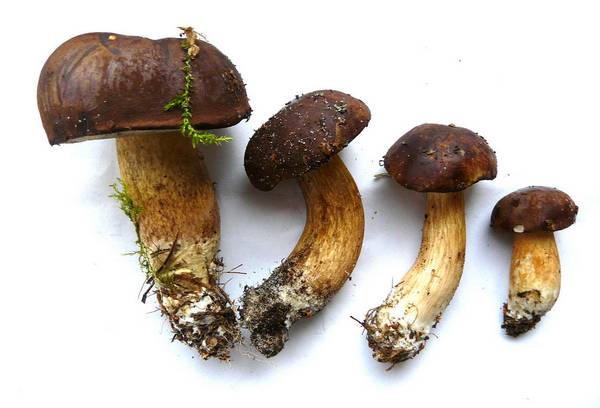
Photo by: Malyszkz, CC BY-SA 3.0
When harvesting Polish mushrooms, you must adhere to the general rules for the safe collection of wild edible species:
- never pick mushrooms in an unfamiliar area;
- not "hunt" for them in cities, on lawns, parks and even in green areas of forest parks adjacent to urban areas;
- do not pick mushrooms near major highways (closer than 500 m), in forests adjacent to industrial zones;
- do not put old mushrooms in the basket, as they have already begun the decomposition process, as a result of which toxins are formed.
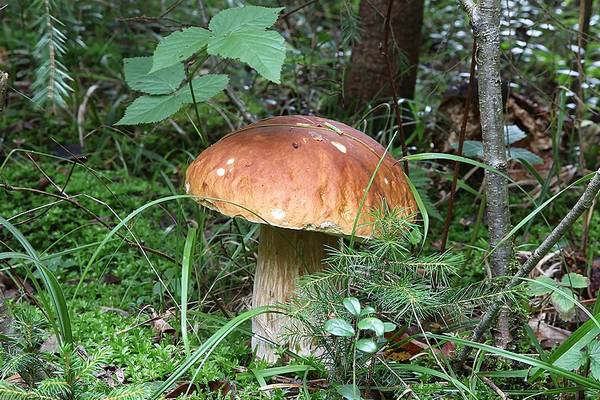
Photo by Nikolay Kashpor, CC BY 4.0
Edibility
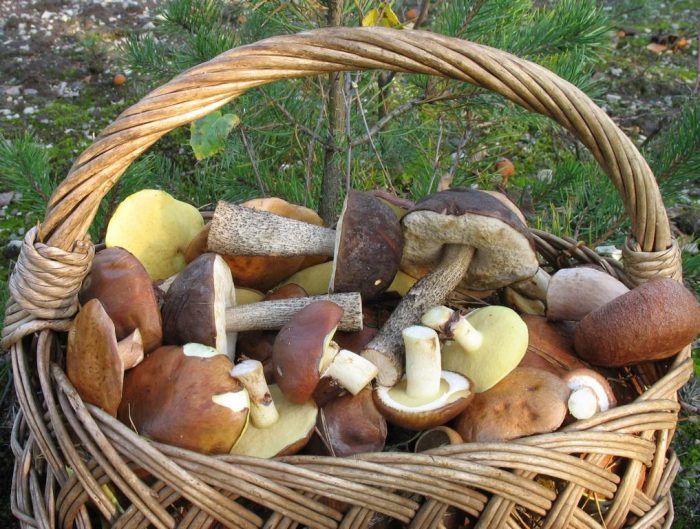
Flywheels are edible mushrooms and are highly valued for their beneficial properties and pleasant taste. Polish mushrooms, even of a rather impressive size, do not have such a poor quality as the ability to accumulate radiation and heavy poisons, therefore they grow in ecologically uncontaminated regions and are not dangerous for food.
However, you should be aware that worms that are found in only one mushroom can spoil the entire basket in a few hours and make its contents unsuitable for further use for food purposes. Therefore, mushroom pickers should carefully examine each specimen before putting it in their bucket. If the lesion is very small, then it can be cut off with a knife. If both the cap and the leg are damaged, then it is necessary to throw out such a mushroom without regret. Also, it is better to refrain from very old mushrooms.
Shelf life
Within a day after collection (the maximum storage period in its original form), it is imperative to process the mushrooms: they are washed, adhered dirt, soil and leaves are removed, and also the hardened base of the mushroom stem is removed. After that, it is advisable to soak the mushrooms for 10-20 minutes in cold water with the addition of salt so that the remaining sand and earth remain at the bottom of the vessel, and the worms die and float to the surface.
What can you cook
Experienced chefs can prepare a huge number of delicious and varied dishes from Polish mushrooms. They can also be eaten separately: fried, pickled, boiled. They are even dried and frozen to enjoy a delicious mushroom soup or baked potato and mushroom on a cold winter evening.

